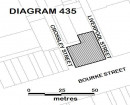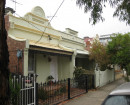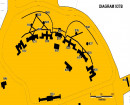BENDIGO SCHOOL OF MINES (BENDIGO TAFE)
118-160 MCCRAE STREET BENDIGO, GREATER BENDIGO CITY
-
Add to tour
You must log in to do that.
-
Share
-
Shortlist place
You must log in to do that.
- Download report
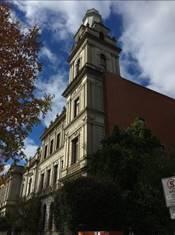


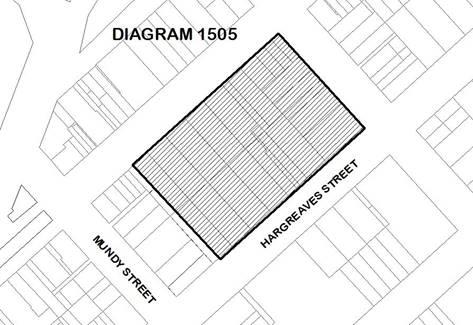

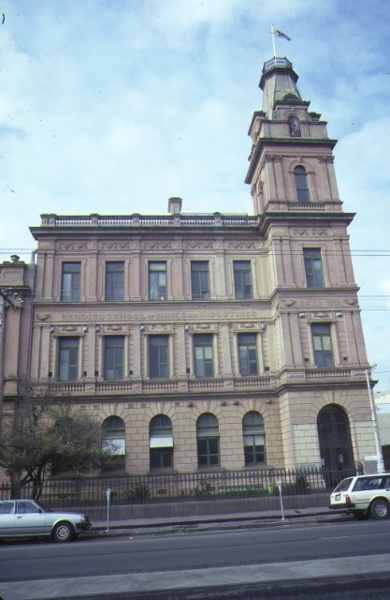
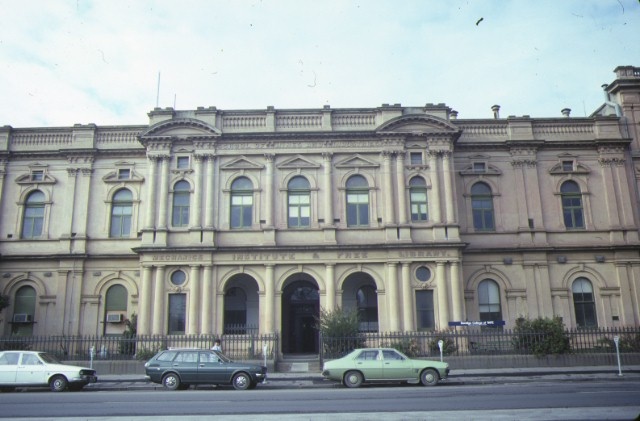
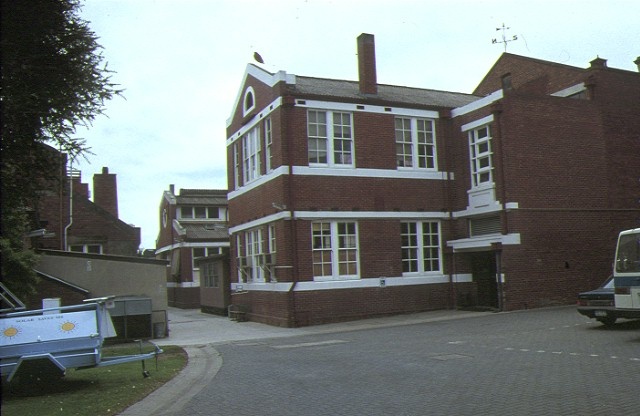

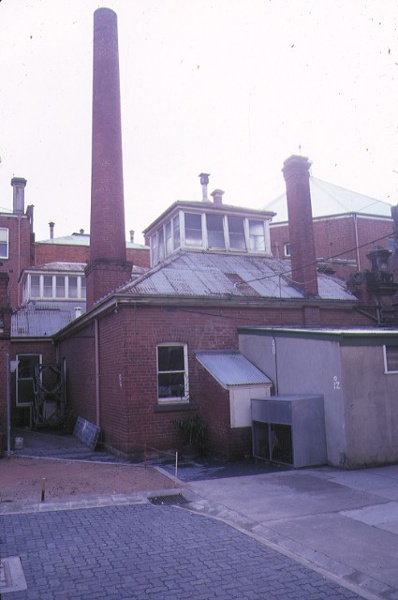
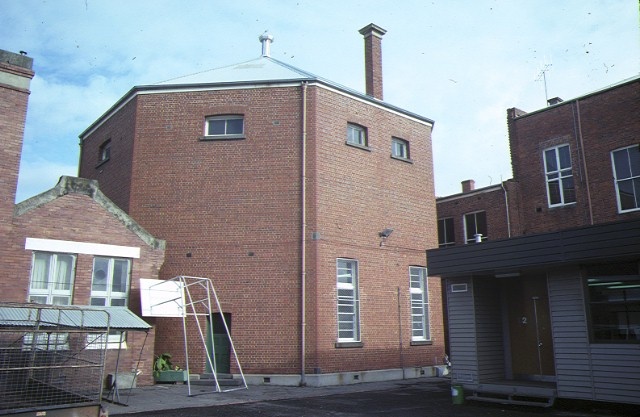
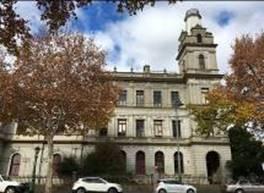
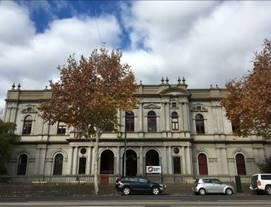
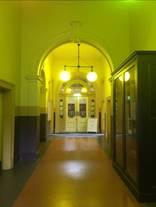
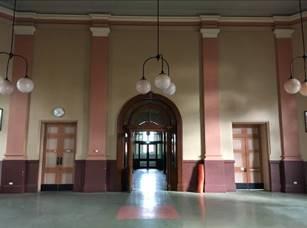
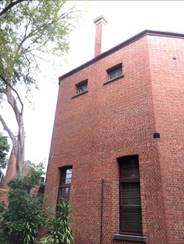
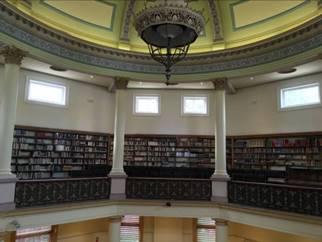
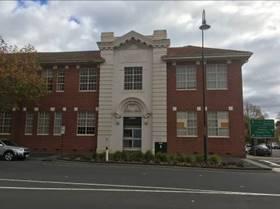
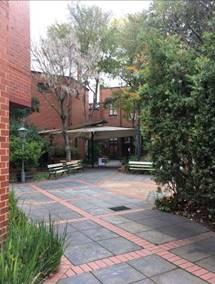
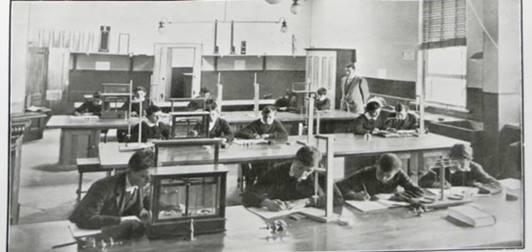
Statement of Significance
Importance to the course, or pattern, of Victoria's cultural history.
Importance in demonstrating the principal characteristics of a class of cultural place and objects.
-
-
BENDIGO SCHOOL OF MINES (BENDIGO TAFE) - History
In 1854 part of the current Bendigo TAFE site was secured for the Sandhurst Mechanics Institute and library and a canvas, timber-framed pavilion officially opened in 1856. In 1864 prolific German architects W.C. Vahland and R. Getzschmann designed the first permanent Mechanics Institute building. It included a library and geological collection. Vahland subsequently designed additions to this building and the other nineteenth-century buildings on the site including the unifying facade along McCrae Street (1878), the School of Mines and Industries Building on Hargreaves Street (1884), the octagonal Mechanics Institute Library (1887) and the three-storey towered building on McCrae Street (1889) which contained a lecture hall that could accommodate 600 people. In 1871, the Mechanics Institute undertook to establish a School of Mines, primarily but not exclusively to provide practical and scientific education related to the mining industry. The School of Mines officially opened in 1873 and offered a wide range of subjects including geology, surveying, botany and architectural drawing. The School of Mines erected classrooms and a Chemistry and Metallurgy Laboratory between 1879 and 1892. A further chemistry laboratory for senior students was erected in 1912. In 1904 the School of Mines officially took over the site and its assets from the Mechanics Institute. By the 1920s, technical and trades education had become the focus. The Junior Technical School was added 1926-7 to accommodate preparatory classes in trades education for younger boys. In 1959 the School of Mines became the Bendigo Technical College, which subsequently became the Institute of Technology in 1965 and later a TAFE college. The place is currently Bendigo TAFE City Campus.
References:
Baragwanath, Pam and James, Ken (2015) These Walls Speak Volumes: A History of Mechanics Institutes in Victoria
HLCD (2011) Bendigo Regional Institute of TAFE Conservation Management Plan
BENDIGO SCHOOL OF MINES (BENDIGO TAFE) - Assessment Against Criteria
Criterion WHAT IS SIGNIFICANT?
The buildings (exteriors and interiors) and other features of the Bendigo School of Mines (Bendigo TAFE) constructed in the late nineteenth and early twentieth century for educational purposes. This includes Building A (Former Mechanics Institute and School of Mines Building), Building E (Former School of Mines and Industries Building), Building H (Former Junior Technical School), the 1880s and 1890s portions of Building L (Former Mechanics Institute Library and Senior Chemistry Laboratory and Assaying Room), Building M (Former Chemistry and Metallurgy Laboratories) and the palisade fence along the McCrae Street frontage and its attached gates.
HOW IS IT SIGNIFICANT?
The Bendigo School of Mines (Bendigo TAFE) is of historical and architectural significance to the State of Victoria for the following reasons:
Criterion A
Importance to the course, or pattern, of Victoria's cultural history.Criterion D
Importance in demonstrating the principal characteristics of a class of cultural place and objects. WHY IS IT SIGNIFICANT?The Bendigo School of Mines (Bendigo TAFE) is significant at the State level for the following reasons:
The Bendigo School of Mines (Bendigo TAFE) is historically significant as a centre of mining and metallurgical education which was important to the goldmining industry and the wealth of Victoria in the latter part of the nineteenth century. The range of buildings and other features on the site collectively demonstrate the evolution of technical and vocational education from the 1850s onwards. The early foundations of technical education are evident in the Former Mechanics Institute, Former Mechanics Institute Library and array of Former School of Mines buildings. The scale and prominence of these buildings demonstrates the central role played by these Mechanics Institutes and Schools of Mines in the later part of the nineteenth century. The Former Junior Technical School demonstrates how earlier forms of technical education evolved into trades education in the early twentieth century. [
Criterion A].
The Bendigo School of Mines (Bendigo TAFE) is architecturally significant as a fine representative example of a technical education campus. It consists of buildings of different types and eras that were constructed for specific educational purposes. Together they express both the practical requirements of technical education and its ongoing importance. The place includes a number of notable individual nineteenth-century buildings designed by the distinguished German architect W.C. Vahland. The Former Mechanics Institute and Former School of Mines buildings on McCrae Street display fine Classical characteristics. The laboratory buildings are significant as remaining examples of Vahland's designs for practical buildings. The Former Mechanics Institute Library is a highly original interior space with decoration by important artist and modeller, Otto Waschatz, and is an excellent example of his work. [
Criterion D].
BENDIGO SCHOOL OF MINES (BENDIGO TAFE) - Permit Exemptions
General Exemptions:General exemptions apply to all places and objects included in the Victorian Heritage Register (VHR). General exemptions have been designed to allow everyday activities, maintenance and changes to your property, which don’t harm its cultural heritage significance, to proceed without the need to obtain approvals under the Heritage Act 2017.Places of worship: In some circumstances, you can alter a place of worship to accommodate religious practices without a permit, but you must notify the Executive Director of Heritage Victoria before you start the works or activities at least 20 business days before the works or activities are to commence.Subdivision/consolidation: Permit exemptions exist for some subdivisions and consolidations. If the subdivision or consolidation is in accordance with a planning permit granted under Part 4 of the Planning and Environment Act 1987 and the application for the planning permit was referred to the Executive Director of Heritage Victoria as a determining referral authority, a permit is not required.Specific exemptions may also apply to your registered place or object. If applicable, these are listed below. Specific exemptions are tailored to the conservation and management needs of an individual registered place or object and set out works and activities that are exempt from the requirements of a permit. Specific exemptions prevail if they conflict with general exemptions. Find out more about heritage permit exemptions here.Specific Exemptions:It should be noted that Permit Exemptions can be granted at the time of registration (under s.38 of the Heritage Act). Permit Exemptions can also be applied for and granted after registration (under s.92 of the Heritage Act).
General Condition 1
All exempted alterations are to be planned and carried out in a manner which prevents damage to the fabric of the registered place or object.
General Condition 2
Should it become apparent during further inspection or the carrying out of works that original or previously hidden or inaccessible details of the place or object are revealed which relate to the significance of the place or object, then the exemption covering such works shall cease and Heritage Victoria shall be notified as soon as possible.
General Condition 3
All works should ideally be informed by Conservation Management Plans prepared for the place. The Executive Director is not bound by any Conservation Management Plan, and permits still must be obtained for works suggested in any Conservation Management Plan.
General Condition 4
Nothing in this determination prevents the Heritage Council from amending or rescinding all or any of the permit exemptions.
General Condition 5
Nothing in this determination exempts owners or their agents from the responsibility to seek relevant planning or building permits from the relevant responsible authority, where applicable.
Under s.38 of the Heritage Act 2017 the Executive Director may include in his recommendation categories of works or activities which may be carried out in relation to the place or object without the need for a permit under Part 5 of the Act. The Executive Director must not make a recommendation for any categories of works or activities if he considers that the works or activities may harm the cultural heritage significance of the place or object. The following permit exemptions are not considered to cause harm to the cultural heritage significance of the Bendigo School of Mines (Bendigo TAFE).
Specific Permit Exemptions
Public Safety and Security
. All works required to maintain, secure and make safe buildings and structures including the removal of broken glass, the temporary shuttering of windows and covering of holes providing this work is reversible and does not have a detrimental impact on fabric.
. Erection of temporary fencing necessary to maintain public safety.
. Works or activities, including emergency stabilisation, necessary to secure safety in an emergency where a structure or part of a structure has been irreparably damaged or destabilised and poses a safety risk to its users or the public. It is acknowledged that in some instances additional damage to significant fabric may be required to stabilise and make safe. In these instances every attempt must be made to conserve and retain as much significant fabric as possible. The Executive Director, Heritage Victoria, must be notified within seven days of the commencement of these works or activities.
Garden and landscape
. Subsurface works involving the installation, removal or replacement of watering and drainage systems or other services provided there are no visible above ground elements. Landscaping, paving etc. is to be returned like for like on the completion of works.
. The processes of gardening, including mowing, hedge clipping, bedding displays, disease and weed control, maintenance of existing plants and replacement with similar species.
. The removal or pruning of dead or dangerous trees to maintain safety.
. Management and maintenance of trees including formative and remedial pruning, removal of deadwood, pest and disease control, cabling and similar supportive works.
. Establishment, repair or removal of existing hard landscape elements such as paving, paths, stairs and garden walls.
. Works associated with the management of possums or vermin.
. Clearing and maintenance of drains and gutters.
Buildings and features of primary cultural heritage significance
These works can be carried out without a permit provided they do not cause harm to the cultural heritage significance of the place.
Exteriors
. Works to, or removal of, the modern linking structure between the 1990s portion of Building L and Building E, subject to a permit application for the management of the fabric of Building E where it intersects with the linking structure.
. Works to, or removal of, 1990s additions to Building E subject to a permit application for the management of the fabric of Building E where it intersects with the addition.
. Removal, replacement or works to recently installed services and structures such as fire services, boom gates, bin stores, bollards, lighting and security devices etc, provided the location and scale remains the same.
. Removal of items such as air conditioners, pipe work, ducting, wiring, antennae, aerials etc and making good.
. Painting of previously painted surfaces in the same colour, finish and type provided that preparation or painting does not remove earlier paint finishes or other decorative schemes.
. Installation or repair of damp-proofing in a manner which does not harm significant fabric.
. Minor patching, repair and maintenance which replaces like with like without large-scale removal of or damage to the existing fabric or the large-scale introduction of new materials. Repairs must maximise protection and retention of fabric and include the conservation of existing details or elements. Any new materials used for repair must not exacerbate the decay of existing fabric due to chemical incompatibility, obscure existing fabric or limit access to existing fabric for future maintenance.
. Removal or replacement of existing external signage provided the size, location and material remains the same.
Interiors
. Painting of previously painted walls, ceilings and other elements in the same colour, finish and type provided that preparation or painting does not remove evidence of earlier paint or other decorative schemes. No stained timberwork is to be painted.
. Removal of paint from originally unpainted or oiled surfaces including ceilings, joinery, doors, architraves and skirtings by non-abrasive methods.
. Installation, removal or replacement of safety devices such as detectors, alarms, emergency lights, exit signs, luminaires and the like.
. Installation, removal or replacement of carpets and/or flexible floor coverings, window dressings, and devices for mounting artworks and noticeboards.
. Removal and replacement of information, directional and advertising signage within existing signage and display cases.
. Demolition or removal of the following post-1950s items: stud/partition walls, suspended ceilings or wall linings (including plasterboard, laminate and Masonite), glazed screens, flush panel or part-glazed laminated doors, aluminium-framed windows, lights and light fittings, built-in cupboards, cubicle partitions, computer and office fitouts and the like.
. Installation, removal or replacement of ducted, hydronic or concealed radiant type heating provided that the installation does not damage existing skirtings and architraves, and provided that the central plant is concealed, and that the work is done in a manner which does not harm the cultural heritage significance of the place.
. Works to maintain or refurbish existing post-1950s bathrooms and toilets, including installing new appliances, retiling and the like.
. Replacement of existing services such as cabling, plumbing, electrical wiring and fire services that uses existing routes, conduits or voids, and does not involve damage to or the removal of significant fabric.
. Works to maintain or refurbish existing kitchens, bars, canteens and hospitality facilities including installing new appliances and floor coverings.
. Repairs, refitting or rewiring lift cars, motors, equipment and the like.
. Installation, removal or replacement of electrical and IT wiring provided that such works do not require chasing or cutting into significant fabric and providing that any early light switches, light fittings, pull cords, push buttons or power outlets are retained in-situ. Note: if wiring original to the place was carried in timber conduits then the conduits and unused original wiring should remain in situ.
. Installation of plant within the roof space, providing that it does not impact on the external appearance of the building or involve structural changes.
. Installation, removal or replacement of bulk insulation in the roof space.
. Installation, removal or replacement of smoke detectors.
Buildings of no cultural heritage significance
Exteriors
All the permit exemptions for buildings and features of primary significance and also:
. Demolition and removal of buildings where they are freestanding and do not intersect with buildings of primary heritage significance provided a report and plans showing adequate protection for the buildings of primary significance is first approved the Executive Director.
. Alteration of existing buildings, within the existing footprints and envelopes of those buildings.
Note: a permit is required for new buildings that will replace buildings that have been demolished or removed.
Interiors
All works.
BENDIGO SCHOOL OF MINES (BENDIGO TAFE) - Permit Exemption Policy
PERMIT POLICY
Preamble
The purpose of the Permit Policy is to assist when considering or making decisions regarding works to a registered place. It is recommended that any proposed works be discussed with an officer of Heritage Victoria prior to making a permit application. Discussing proposed works will assist in answering questions the owner may have and aid any decisions regarding works to the place.
The extent of registration of the Bendigo School of Mines (Bendigo TAFE) in the Victorian Heritage Register affects the whole place shown on Diagram 1505 including the land, all buildings (exteriors and interiors), service roads, trees, landscape elements and other features. Under the Heritage Act 2017 a person must not remove or demolish, damage or despoil, develop or alter or excavate, relocate or disturb the position of any part of a registered place or object without approval. It is acknowledged, however, that alterations and other works may be required to keep places and objects in good repair and adapt them for use into the future.
If a person wishes to undertake works or activities in relation to a registered place or registered object, they must apply to the Executive Director, Heritage Victoria for a permit. The purpose of a permit is to enable appropriate change to a place and to effectively manage adverse impacts on the cultural heritage significance of a place as a consequence of change. If an owner is uncertain whether a heritage permit is required, it is recommended that Heritage Victoria be contacted.
Permits are required for anything which alters the place or object, unless a permit exemption is granted. Permit exemptions usually cover routine maintenance and upkeep issues faced by owners as well as minor works or works to the elements of the place or object that are not significant. They may include appropriate works that are specified in a conservation management plan. Permit exemptions can be granted at the time of registration (under s.38 of the Heritage Act) or after registration (under s.92 of the Heritage Act). It should be noted that the addition of new buildings to the registered place, as well as alterations to the interior and exterior of existing buildings requires a permit, unless a specific permit exemption is granted.
Conservation management plans
Helen Lardner Conservation and Design (HLCD) prepared the Bendigo Regional Institute of TAFE Conservation Management Plan in 2011. It should be used to guide decision making about the place and regularly updated.
Aboriginal cultural heritage
If works are proposed which have the potential to disturb or have an impact on Aboriginal cultural heritage it is necessary to contact Aboriginal Victoria to ascertain any requirements under the Aboriginal Heritage Act 2006.If any Aboriginal cultural heritage is discovered or exposed at any time it is necessary to immediately contact Aboriginal Victoria to ascertain requirements under the Aboriginal Heritage Act 2006.
Other approvals
Please be aware that approval from other authorities (such as local government) may be required to undertake works.
Archaeology
Any works that may affect historical archaeological features, deposits or artefacts at the place is likely to require a permit, permit exemption or consent. Advice should be sought from the Archaeology Team at Heritage Victoria.
Cultural heritage significance
Overview of significance
The cultural heritage significance of the Bendigo School of Mines (Bendigo TAFE) lies in the physical fabric of the place, particularly the buildings and features constructed for the purposes of technical education in the nineteenth and early twentieth centuries. Buildings, additions and features constructed in the late twentieth and early twenty-first century are not of heritage significance. These varying degrees of cultural heritage significance are outlined below. The naming convention of buildings used here has been drawn from plans supplied by Bendigo TAFE and the Bendigo Regional Institute of TAFE Conservation Management Plan.
a. All of the buildings and features listed here are of primary cultural heritage significance in the context of the place. The buildings and features of cultural heritage significance are shown in red on the diagram. A permit is required for most works or alterations. See Permit Exemptions section for specific permit exempt activities:
. Building A (Former Mechanics Institute and School of Mines Building)
. Building E (Former School of Mines and Industries Building)
. Building H (Former Junior Technical School)
. 1880s and 1890s portions of Building L (Former Mechanics Institute Library and Senior Chemistry Laboratory and Assaying Room). Note: the 1990s portion of Building L, closest to Building E, is not of primary cultural heritage significance.
. Building M (Former Chemistry and Metallurgy Laboratories)
. The palisade fence along the McCrae Street frontage and its attached gates.
b. The following buildings (and parts of buildings) and features are of no cultural heritage significance. These are shown in yellow on the diagram. Specific permit exemptions are provided for these items:
. Building C
. 1990s additions to Building E
. 1990s portion of Building L.
. Building P.
-
-
-
-
-
ANNE CAUDLE CENTRE, BENDIGO BENEVOLENT ASYLUM AND LYING-IN HOSPITAL
 Victorian Heritage Register H0992
Victorian Heritage Register H0992 -
BENDIGO TOWN HALL
 Victorian Heritage Register H0117
Victorian Heritage Register H0117 -
SPECIMEN COTTAGE
 Victorian Heritage Register H1615
Victorian Heritage Register H1615
-
"1890"
 Yarra City
Yarra City -
"AMF Officers" Shed
 Moorabool Shire
Moorabool Shire -
"AQUA PROFONDA" SIGN, FITZROY POOL
 Victorian Heritage Register H1687
Victorian Heritage Register H1687
-
'Lawn House' (Former)
 Hobsons Bay City
Hobsons Bay City -
1 Fairchild Street
 Yarra City
Yarra City -
10 Richardson Street
 Yarra City
Yarra City
-
-









